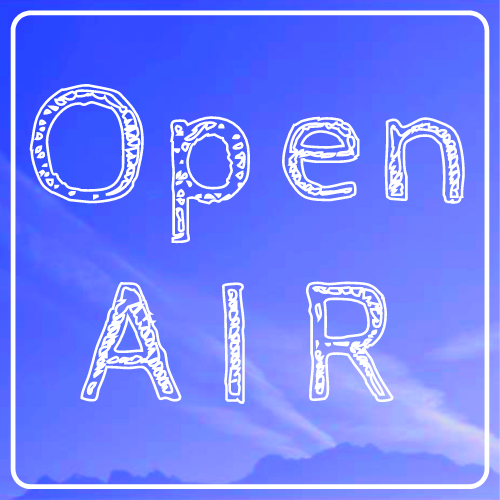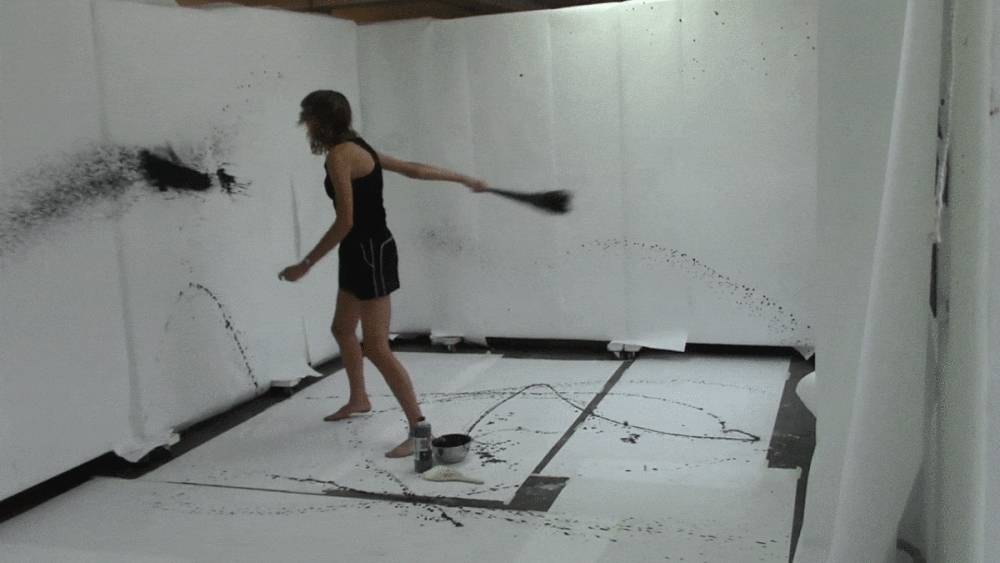Michelle Postma: MONOCHROMATIC
2021 Artist-in-Residence at Flathead Lake Biological Station
How was your experience as an Open AIR Artist-in-Residence?
Thank you OpenAir and the Flathead Bio Station for this opportunity. It is wonderful to be embedded in a community of kind, intelligent, energized creative researchers. Being around the researchers gave me a sense of shared solidarity in exploration. Jim E and Jim C allowed me to join the honors students in their mysis samling excursion. We boarded the Jessie B at 9 pm and motored twenty minutes out into the dark of the lake. A large wench lowered a fancy net for ten minutes down and up. When the 5 inch plastic sampling jar emerged we squished around in orange life vests as it was held up to the red lights. Tiny white shrimp, as big as a pinky nail settled in the bottom. Each had two beady black eyes. Jim cut the lights and we bobbed between black and the effervescent milky way. I feel very lucky to have been invited. Blessings showered upon you all!
Bodhicitta, 8 x 4 ft, acrylic on panel.
What was your research process during this time?
I read only books I wanted to read. The lake and I waved at one another. I ran the nature trail and examined various manifestations of bear skat. Did not see the resident bear mamma. Scientists enthusiastically extolled the mysteries and virtues behind their data. Their eyes shone. And some demons softly crept into my work to the sounds of metal core. My time at the bio station gave me space and clarity within myself. The lake became a state of mind, if I let it be.
What are you up to now (post Open AIR)?
The Zootown Arts Community Center in downtown Missoula is hosting me as their resident artist into February, and I’ll be leading a Poetic Printmaking adult class starting in January. Come! It’ll be rad.
Ink on panel.
How would you describe your work?
My art is emblematic of the practice of accepting reality. The vehicles I use to do this are a cast of characters, materials and compositional strategies that in totality, remind the viewer and myself to be in the moment.
Tell us about your most recent solo exhibition?
My thesis exhibition, Heart Vomit and the Dream Army, featured mural-esque ink paintings on panels and approximately 36 - 48 inch high abstract ceramic figures covered with images. Both the 2D and 3D works feature a cast of characters. These characters originate from “Michelle Land”, an imaginary world created to house an evolving symbolic visual language. The graphic black and white imagery proliferates with metaphorical smiling figures and animals. The characters and the painting process represent: modes of thought, relationships, events, places, and feelings.The universe depicted is made of infinite psychological and physical realities.
Mouse Humanoid, clay.
Walk us through the choices you make in a single piece.
Image creation stems from two meditative practices: Buddhist self inquiry teachings and daily lap swim. Both allow access to the physiological energy that opens my imagination in unfettered ways. For instance while swimming, I construct images through a didactic ame of questioning and listening to my mind. The works combine elements of representational imagery and chaotic expressive marks. “Chaos marks” are an extension of my emotional and energetic lived experience. The representational imagery reflects lived narrative. The paintings and sculptures are monochromatic because I want the viewer to cue into the recognizable symbols before cuing into emotions. In other words, head to heart versus heart to head. The actual physical painting becomes a negotiation between the chaos marks and images. During this process plans and ideas shift to accommodate composition. As I allow for change, the images expand their meanings. When the work is done, I sit with it in acknowledgement of our mutual existences, allowing the process and the painting to wash over me. I think, What am I feeling about this? In this way, the process of my work becomes the content.
How do you think about color in general?
The paintings and sculptures are both monochromatic. Colors have a lot of emotional content. Colors tell you how to feel. With these works I am not trying to tell anyone how to feel, least of all myself. I go through a lot of effort to distance myself from my experiences by talking about them through my symbolic language. The monochromatic treatment is less hot than the emotional energy of colored works. Then my emotional ego identifies less with my experience and I can consider them more dispassionately. Author Haruki Murakami uses a similar process. He explains, “I don't like relating my experiences just the way they are. So I reshape them over and over and fictionalize them, to the point where, in some cases, you can't detect what they were modeled after. Through these steps, I gain a deeper understanding of the meaning behind the experience. Fiction writing [and image making] is partly the process of clarifying what lies within you.”
“Racoon Lotus“
See more of Michelle’s work at www.michelle.land





